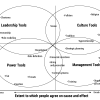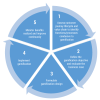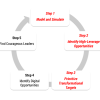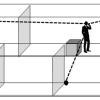Business Transformation Requires Transformational Leaders
Leadership and teaming skills are front and center in times of rapid change. Meet today’s constant disruption head on with expert guidance in leadership, business strategy, transformation, and innovation. Whether the disruption du jour is a digitally-driven upending of traditional business models, the pandemic-driven end to business as usual, or the change-driven challenge of staffing that meets your transformation plans—you’ll be prepared with cutting edge techniques and expert knowledge that enable strategic leadership.
Recently Published
Wearables in Banking
Digital transformation continues to change the financial sector. The increasing use of smartphones and tablets has changed customers’ behaviors and fueled adoption of mobile banking. Wearables capable of storing and processing data allow us to integrate better with the technology and incorporate electronics into every domain of our lives. The question arises whether the wearables can follow that success and become a new disruption for the financial sector. And if so, will they replace or supplement the mobile devices that are currently in use?
As part of our shift to cloud and open source platforms, we chose to introduce a number of culture changes. Early in the process, we decided to make the cloud migration a rallying cry for the technology organization. Specifically, we challenged senior technology staff regarding the fundamentals of what our systems did and how well they served the business. This resulted in key changes in the way we addressed the fundamentals of our multi-petabyte, big data problem. In this process, new high-potential technology leaders were identified and elevated in the organization. The hiring and staffing effort that accompanied this effort also provided an opportunity to further reshape the technology profile of the company.
Soft Management Skills: The New Core Ability of Successful CIOs
The MMVM project, a collaboration between Cutter Fellow Bob Benson and myself, was developed on the premise that traditional IT evaluation methods, which focus mainly on technical aspects such as technology performance, availability levels, and monetary cost-benefit relationships, are unable to deliver insights into the business value delivered by IT investments. Given this premise, we determined that it was necessary to build a new model — discussed in this Executive Update — that could go beyond the usual constraints, while at the same time allowing us to better understand the following aspects of each organization:
- Maturity and performance level of IT management
- Value contributed by IT to the achievement of the organization’s mission
- Costs structures
Enterprise Gamification -- Doing It Right
The potential of gamification as a business transformation and performance improvement tool is immense — if done right. The focus of this Executive Update is enterprise gamification: gamifying business scenarios and processes to derive more value.
No enterprise big or small should fail to think about what digital transformation can do for — or to — them. Within commonsense economic limits, current technologies should be exploited. Further, it's important to envision potential technological changes a few years out and think through how to prepare for and exploit them. Obviously, that's not easy.
In the November-December 2015 issue of Cutter IT Journal (CITJ), I shared “Five Steps to Digital Transformation.” This Executive Update picks up where that discussion left off and dives deeper into the front end of the transformation process.
Thinking Inside the Box: Interior Localization Possibilities
Localization is an inevitable requirement of mobility. However, once an individual enters a building, GPS becomes inaccessible, Wi-Fi triangulation may be unreliable, and cellular triangulation may be impossible. As we illustrate in this Executive Update, the next area of importance is indoor location, which continues to lag due to various obstacles.
















